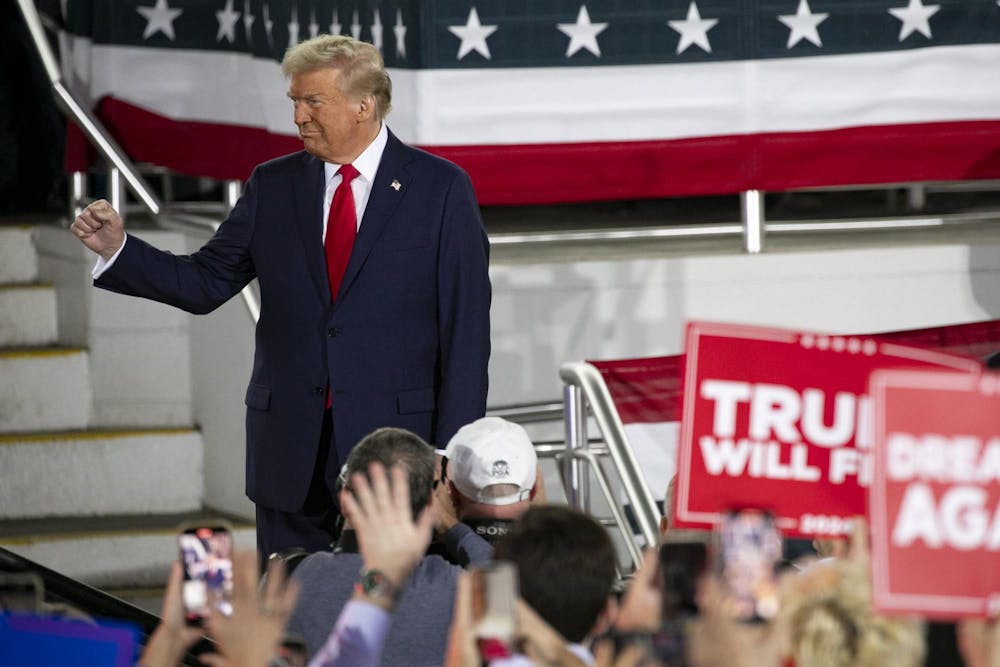Calling President Donald Trump a fascist is old news now; every executive order he signs, every statement his administration makes and every talking point his supporters spew reeks of his blatant disregard for any tenets of democracy or constitutional freedoms. However, the way our current president has mobilized public cultural institutions in pursuit of his “pro-America” authoritarian agenda cannot be overstated.
His attacks on the intellectual and administrative agency of universities are pressing, but his total hijacking of our nation’s artistic institutions is a quieter encroachment on the cultural landscape and any freedoms once enshrined here. Trump, like other fascist leaders, is manipulating the federal systems and funding for the arts to propagate tyrannical, ahistorical ideologies to the public.
Trump explicitly began his authoritarian infringement in late March with an executive order dedicated to “restoring truth and sanity” in American history. He targets sites of historical knowledge, including history museums, art museums, monuments, parks and more. This order insists that these institutions have succumbed to woke-ism. It spouts false, anti-American propaganda surrounding the recognition of transwomen in women’s history, and specifically calls out an exhibition related to the American history of race in the Smithsonian American Art Museum.
To enforce this order, the president placed Vice President JD Vance on the Smithsonian’s Board of Regents as an advisor. Trump also added Doug Burgum, the secretary of the interior, as an additional museum watchdog. Burgum, tasked with memorials and monuments, will be determining if these public works have been changed or removed to fulfill an untrue ideological purpose that also misrepresents American history and values.
Historically, fascism requires an obsessive relationship with aesthetics and culture to socially reproduce its political and ideological monopoly. Trump is trying to reestablish America as a unified, radically conservative nation that makes no acknowledgment of left-leaning politics. To realize this counterfeit socio-political ideal, he must both stifle any attempts at dissent and create an image that supports the notion of a proud, traditional America.
The most effective way to accomplish this is through visual culture, like in art museums or public artworks like monuments or murals that rely on government funding and are intended to be accessible to the public. By policing what these institutions can talk about and trying to influence the kind of art that is and isn’t acceptable, President Trump is leveraging art as a tool of authoritarianism.
This oppressive relationship between art and fascism is not new or particularly surprising. It calls back to the most notorious use of art for authoritarianism during the Nazi regime. When Hitler rose to power, he took control of all forms of cultural expression, most fervently of which were the arts, with the establishment of the Reich Chamber of Culture in 1933. As the Nazis negotiated a new and improved Aryan identity for Germany, they translated this into the kinds of art that were suitably German and respectable and that which was not.
Unlike Trump’s label of “woke” or “ideological” or even the blatant anti-American, Hitler referred to unacceptable art under his regime as “degenerate.” These works were any kind of art of the modernist flavor, such as abstract or expressionist paintings. They accused any artist capable of creating such works as having a criminal psychology, infecting their art with Jewish and communist influences that posed a threat to the security and moral integrity of the true German people.
The Nazis were so opposed to the dangerous messaging of degenerate art that they launched a full-blown, violent campaign against it. They segregated modern art from other styles and periods. The culmination of this antipathy came in 1937 when Nazis confiscated approximately 20,000 modern artworks from German museums to be later sold abroad at laughably cheap prices or destroyed.




